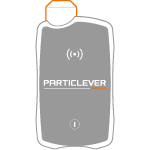Metal machining/welding


Metalworking is a particularly high-risk activity regarding particles, as some machining processes (using high energy) incidentally emit potentially fine particles, even nanoparticles.
Welding fumes are already known to generate new particle compounds that are toxic or carcinogenic. The effect of the small size, mostly nanoscale, of the particles emitted by welding fumes is suspected to be the cause of inflammation and pulmonary fibroses that are sometimes observed in welders (INSERM, 2016).
The very high temperatures needed for metallurgy cause a large number of fine particles to be emitted.
Knowledge of exposure to particles, combining their size, morphology, and chemical compositions, are important to take into account when evaluating the situation.
Key questions
Current knowledge, including recent studies (INSERM, 2016) implies that the nanoparticles of welding fumes are especially responsible for certain pathological effects observed in welders. It is therefore prudent at this stage of our understanding to further bolster prevention strategies with respect to operations that emit the most nanoparticles.
A chemical composition that poses a particular danger or contains nanoparticles will be searched for close to the source during detection (initial assessment). If the particles aren’t visible, using a real-time particle detector is helpful to verify the existence of the source and identify the right position for PARTICLEVER sampling.



